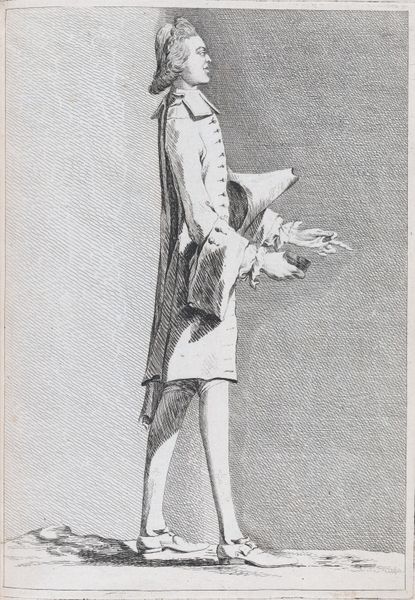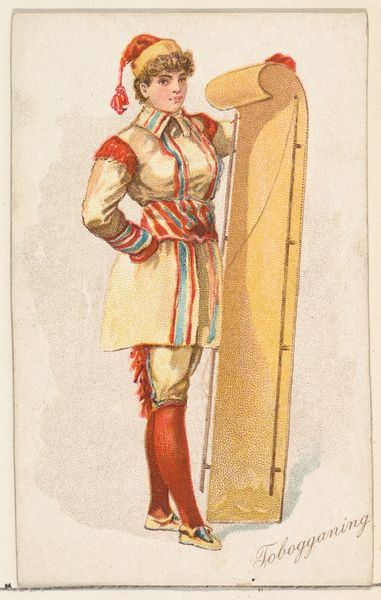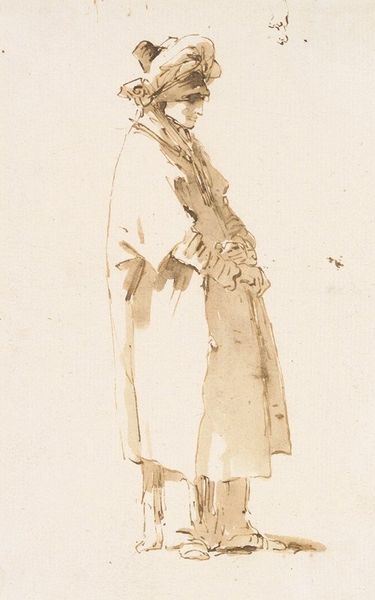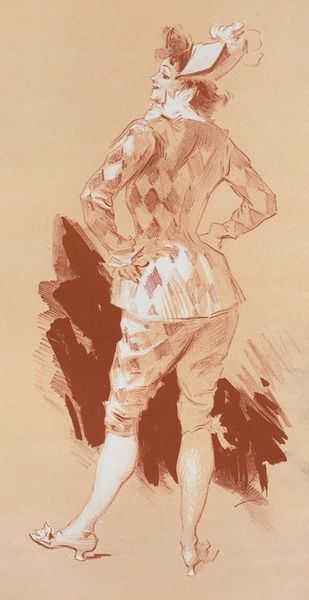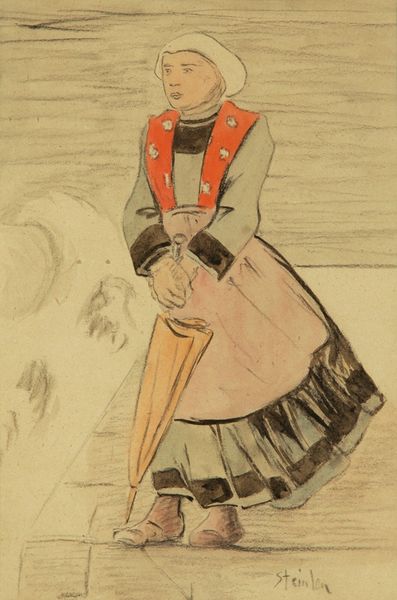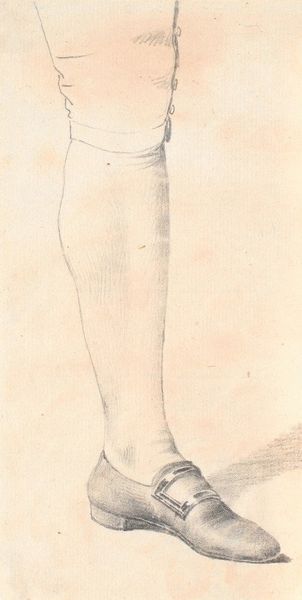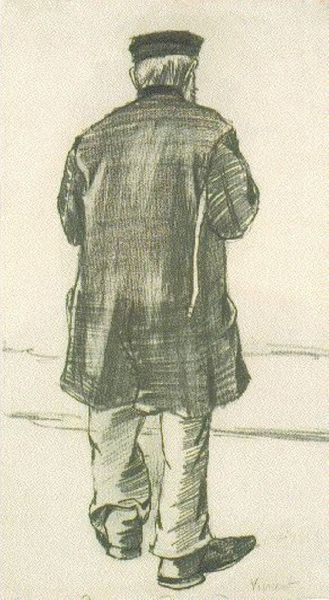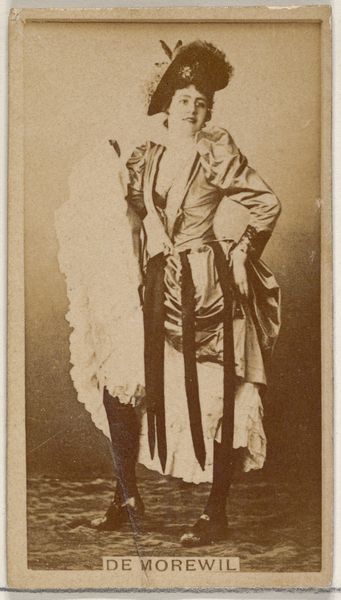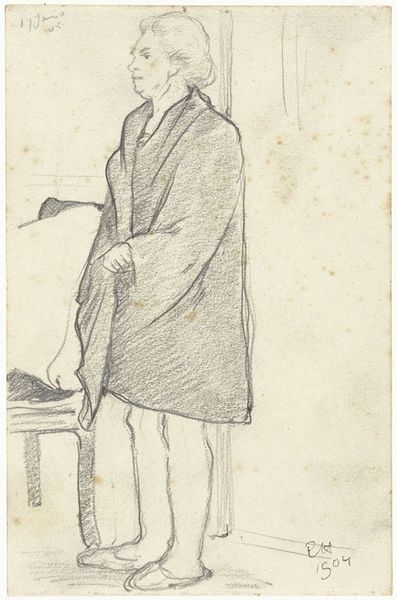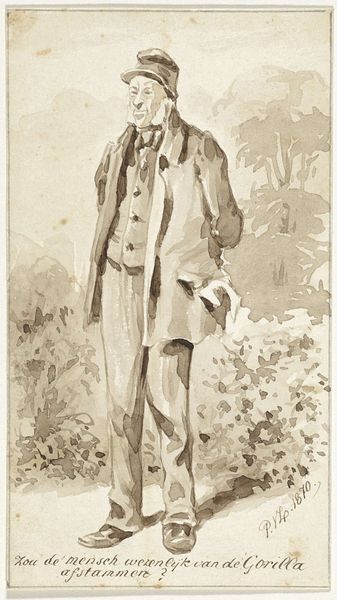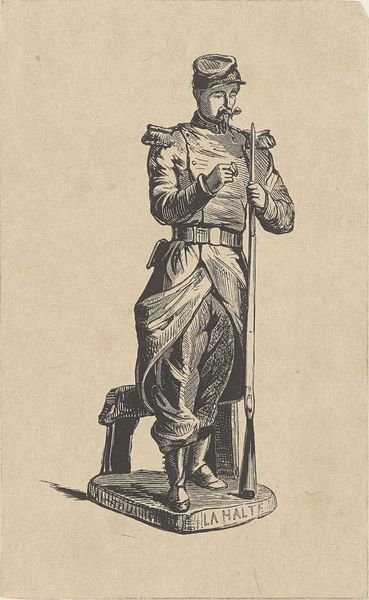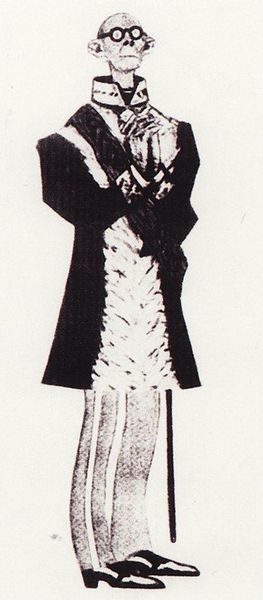
Copyright: Public Domain: Artvee
Curator: This oil on canvas is titled "Geraldine Russell" by John White Alexander, created around 1902-1903. The figure depicted seems rather solitary, doesn't she? Editor: Solitary and windswept, certainly. There’s a prevailing mood of gentle melancholy. It’s striking how the hazy background makes her presence feel both grounded and ephemeral. Tell me more about its material making? Curator: The artist employed broad, almost impressionistic brushstrokes, particularly noticeable in the rendering of her dress and the atmospheric landscape. We can assume Alexander mixed his own paints, considering the nuances of color that give subtle volume, and perhaps employed commercially available canvases. The gesture reads as one of skilled artisanship using fairly new products entering mass circulation. Editor: Fascinating! Knowing this was created in the early 1900s contextualizes this painting—the clothing, subject matter, and technique embody art nouveau tendencies that were becoming popularized by Parisian ateliers. How do you think contemporary viewers received these techniques? Curator: That’s the interesting part of art history, right? While seemingly romantic, portraiture allowed a different vision for femininity, depicting women not in traditional, domestic roles, but as thoughtful figures occupying landscapes beyond domestic spaces. In this sense, works of this nature helped re-negotiate women’s position within art, and even larger society. Editor: I see how her detachment could reflect that. While earlier art movements captured idealized femininity, here is a woman seemingly self-possessed in an atmospheric scene; this moves from an aesthetic interest towards representation of social and gender issues. Also note the production of flowers is beginning to evolve. Curator: Absolutely, these subtle details indicate societal and manufacturing shifts. As our understanding of artistic materials evolves alongside a culture’s aesthetic and political evolution, it's insightful to reflect on how "Geraldine Russell" speaks to its particular moment in time. Editor: Right! Seeing these connections lets us engage with the layers of artistry at play— from paint mixing and manufacturing to social awareness—enhancing our appreciation.
Comments
No comments
Be the first to comment and join the conversation on the ultimate creative platform.
